#pequot
Text
War of 1812 Wednesday: A Son of the Forest

William Apess, depicted in an 1829 engraving on the frontispiece of his autobiography A Son of the Forest. His name is sometimes spelled "Apes," as in the Internet Archive edition of his book, but his facsimile signature on the cover of a 2014 biography, The Life of William Apess, Pequot is clearly Apess (with long S).
William Apess was a mixed race man in early 19th century America of mostly Pequot heritage, who identified as Pequot, although he had European and African ancestry as well. I have only just discovered him and his writing but I'm fascinated by his short but eventful life, which included organising a massive protest on behalf of the Mashpee Wampanoag people.
He was also a War of 1812 veteran, fighting in the United States Army, and A Son of the Forest is a compelling and very underappreciated narrative of his experiences as an ordinary soldier. There aren't many War of 1812 memoirs from enlisted/other ranks, and the two I see mentioned all the time are A Narrative of a Light Company Soldier's Service by Shadrack Byfield, and Autobiography of Thaddeus Lewis, by Thaddeus Lewis.
Byfield and Lewis published their accounts late in life, and Apess' book is closer to the events of the war. He was only 15 years old when he enlisted, and like Thaddeus Lewis he eventually became a Methodist minister.
Wandering about, I fell in company with a sergeant and a file of men who were enlisting soldiers for the United States army. They thought I would answer their purpose, but how to get me was the thing. Now they began to talk to me, then treated me to some spirits and when that began to operate they told me all about the war, and what a fine thing it was to be a soldier. I was pleased with the idea of being a soldier, took some more liquor and some money, had a cockade fastened on my hat, and was off in high spirits for my uniform.
— A young William Apess enlists in the War of 1812, in A Son of the Forest.
While spiritual and religious matters take a leading role in his book (for obvious reasons), I enjoy his focus on social justice which almost approaches liberation theology. He also talks about experiencing anti-Indigenous racism in society and in the army, his struggles with alcoholism (which seem to be kickstarted by his time as a soldier), and there are some wonderfully vivid and brutal descriptions of combat.
The US Army general he mocks and holds in great contempt isn't directly named, but he's obviously Wade Hampton I, who, as his wikipedia bio explains, was not only a terrible military leader in the War of 1812 but a wealthy enslaver and all-around creep.
Apess was part of the invasion of Upper Canada, and his narrative is a great foil to the diary of Lieutenant Colonel George McFeely—another rec from me that describes the ill-disciplined, drunken, and poorly supplied US soldiers of the War of 1812. McFeely was a military leader, attempting to care for his troops and their retinue to the best of his abilities, and Apess was simply trying to survive the harsh conditions.
#War of 1812 Wednesday#war of 1812#william apess#military history#us army#pequots#pequot#indigenous#a son of the forest#soldier#us history#canadian history#this man ticking a lot of my boxes#nice outfit too
45 notes
·
View notes
Text
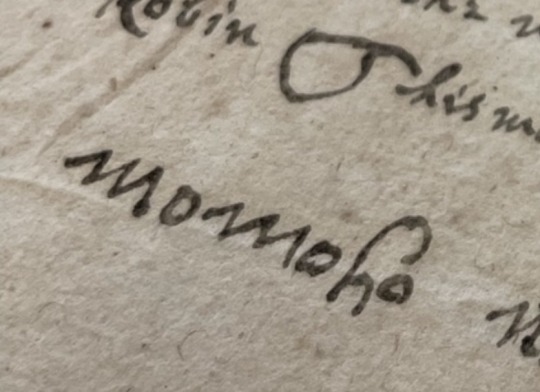
Momoho.
Eastern Pequot Sachem. Their home in and around the places today called “Mystic, Connecticut” and “Stonington, Connecticut.”
Momoho’s signed name appearing here on an October 1, 1676 appeal to the General Court of Connecticut, petitioning the court for access to hunting grounds, winter clothing, and wampum owed.
Seen at the John Hay Library, Providence, RI.
Some kin: Father, Tatobem. A daughter, Oskoosooduck (or Mary Momoho, Mary Ninigret or Mary Sowas). Sons, Wootagonkquam, Cutshamakin.
#pequot#easternpequot#momoho#theirmarks#easternwoodlands#nativehistory#sachem#17thcentury#connecticut#johnhaylibrary#algonquian
2 notes
·
View notes
Quote
After much prolonged sauntering and many random inquiries, I learnt that there were three ships up for three-years' voyages -- the Devil-dam; the Tit-bit; and the Pequod. Devil-Dam, I do not know the origin of; Tit-bit is obvious; Pequod, you will no doubt remember, was the name of the celebrated tribe of Massachusetts Indians, now extinct as the ancient Medes. I peered and pryed about the Devil-Dam; from her, hopped over to the Tit-bit; and, finally, going on board the Pequod, looked around her for a moment, and then decided this was the very ship for us.
Herman Melville, Moby-Dick
The Pequot were not extinct.
From the Mashantucket (Western) Pequot Tribal Nation website:
“Tribal History
The history of the Mashantucket Pequot Tribal Nation is one of dramatically changing fortunes. Native peoples have continuously occupied Mashantucket in Southeastern Connecticut for over 10,000 years. By the early 17th century, just prior to European contact, the Pequots had approximately 8,000 members and inhabited 250 square miles. However, the Pequot War (1636-1638) -- the first major conflict between colonists and an indigenous New England people -- had a devastating impact on the Tribe.
When the Pequot War formally ended, many tribal members had been killed and others placed in slavery or under the control of other tribes. Those placed under the rule of the Mohegans eventually became known as the Mashantucket (Western) Pequots and were given land at Noank in 1651. In 1666, the land at Noank was taken from the Tribe, and it was given back property at Mashantucket.
In the ensuing decades, the Pequots battled to keep their land, while at the same time losing reservation members to outside forces. By 1774, a Colonial census indicated that there were 151 tribal members in residence at Mashantucket. By the early 1800s, there were between 30 and 40 as members moved away from the reservation seeking work. Others joined the Brotherton Movement, a Christian-Indian movement that attracted Natives from New England to a settlement in upstate New York and later, Wisconsin. As for the remaining land in Connecticut, by 1856 illegal land sales had reduced the 989-acre reservation to 213 acres.
In the early 1970s, tribal members began moving back to the Mashantucket reservation, hoping to restore their land base and community, develop economic self-sufficiency, and revitalize tribal culture. By the mid-1970s, tribal members had embarked on a series of economic ventures, in addition to instituting legal action to recover illegally seized land.
With the assistance of the Native American Rights Fund and the Indian Rights Association, the Tribe filed suit in 1976 against neighboring landowners to recover land that had been sold by the State of Connecticut in 1856. Seven years later the Pequots reached a settlement with the landowners, who agreed that the 1856 sale was illegal, and who joined the Tribe in seeking the state government's support. The state responded, and the Connecticut Legislature unanimously passed legislation to petition the federal government to grant tribal recognition to the Mashantucket Pequots and settle the claim. With help from the Connecticut delegation, the Mashantucket Pequot Indian Land Claims Settlement Act was enacted by the U.S. Congress and signed by President Reagan on Oct. 18, 1983. It granted the Tribe federal recognition, enabling it to repurchase and place in trust the land covered in the Settlement Act. Currently, the reservation is 1,250 acres.
As the Mashantucket Pequot Tribal Nation sought to settle its land claims, it also actively engaged in a number of economic enterprises, including the sale of cord wood, maple syrup, and garden vegetables, a swine project and the opening of a hydroponic greenhouse. Once the land claims were settled, the Tribe purchased and operated a restaurant, and established a sand and gravel business. In 1986, the Tribe opened its bingo operation, followed, in 1992, by the establishment of the first phase of Foxwoods Resort Casino.The ceremonial groundbreaking for the Mashantucket Pequot Museum and Research Center took place on Oct. 20, 1993, in a ceremony marking the 10th anniversary of federal recognition of the Mashantucket Pequot Tribal Nation. The new facility, opened on August 11, 1998, is located on the Mashantucket Pequot Reservation, where many members of the Mashantucket Pequot tribal members continue to live. It is one of the oldest, continuously occupied Indian reservations in North America.”
4 notes
·
View notes
Photo

@jahnyahhhh: #Pequot #Indigenous & #AfricanAmerican 🏴🇺🇸🪶 ⠀⠀⠀⠀⠀⠀⠀⠀⠀ ⠀⠀⠀⠀⠀⠀⠀⠀⠀ ⠀⠀⠀⠀⠀⠀⠀⠀⠀ ⠀⠀⠀⠀⠀⠀⠀⠀⠀ ⠀⠀⠀⠀⠀⠀⠀⠀⠀ MY DM's ARE OPEN!!! It's #NativeAmericanHeritageMonth, submit a DM telling us your experiences as a #mixednative! Check out my How To: Be Featured Story for a Shoutout! ☝️ Following me is required! Want to skip the line?? Follow & dm my personal page @donnisbutterfly & LET ME KNOW YOU SUBMITTED HERE! 💋 #mixedgirl #nahm https://www.instagram.com/p/ClMp9ptORkk/?igshid=NGJjMDIxMWI=
6 notes
·
View notes
Text
Virtual Tour of the Mashentucket Museum
With a little bit of history
youtube
View On WordPress
0 notes
Text
Watch "Puritans & Pilgrims in New England | US History to 1865 | Study Hall" on YouTube
youtube
0 notes
Text
Absolutely wild that the same people who won’t celebrate Halloween because “even if the current celebration isn’t demonic, it’s still in honor of demonic forces” will turn around and say that they should have the right to celebrate thanksgiving because “all that stuff is in the past and I’m not doing it the way it was originally done so it’s fine”.
12 notes
·
View notes
Text
How I Pray
National Poetry Month is in full effect as of yesterday. Every year, like a ritual, I try to honor my favorite way of expressing myself creatively. Every year, like some rituals, I fail! However, this year, I am in writer mode so I’m gonna give it the ole Tichaona try!
This piece has been adapted from one of my works in progress for National Poetry Month 2023. It will be part of the book I’m…
View On WordPress
0 notes
Text
You can access your financial information and business files online, anytime, for a fraction of the cost of in-house accounting. Experience safe accounting and bookkeeping services anywhere in the world with us!
1 note
·
View note
Text
Thanksgiving/Day of Mourning
Last year, I made a very quick, basic post about thanksgiving: Indigenous Day of Mourning aka Thanksgiving. if you want the sources for what I’m about to say, check there.
This post will be about why you cannot just go “fuck the pilgrims, we deserve a harvest festival no matter the origin” or anything else that tries to sanitize the holiday.
You Are Still On Stolen Land
As a result, you are still actively profiting off the genocide the pilgrims committed.
I don’t care how educated about racial issues you profess you are. I don’t care how you behave the other 364 days of the year. If you try to distance yourself from the origins of Thanksgiving simply because it makes you uncomfortable to see the blood under the tablecloth, you’re not practised in sitting with actually being anti-racist. You know what to say, but you don’t practice what you preach.
You Are Eating Our Food
Pumpkins/squash, beans, turkey, cranberries, potatoes, corn, sweet potatoes, pecans, maple syrup?
Those are all Native American foods that we taught you how to grow and harvest.
You wouldn’t have any of your traditional Thanksgiving foods without us. The ideal meal of Thanksgiving is ripped right from Indigenous practices and cannot be separated from it.
The fact that these foods have been taken out of Indigenous hands and appropriated by colonizers as the bounties they somehow deserve for landing here is a tragedy, and people need to remember where their food comes from and who had been growing it for thousands of years.
You Had So Much Because Of Massacre
Thanksgiving became an annual tradition after 700 Pequot men, women, children, and elders were killed, freeing up acres of land that colonizers promptly took over. The sheer amount of extra acreage that colonizers had because of their genocide contributed to the excess of food experienced during Thanksgiving. That land had been structured to support more people originally.
Colonizers had never, ever, deserved that much food. They were taking more than they needed, not leaving much behind for the animals that depended on a balance to be held with humans. They took far more than was needed, throwing the balance off in nature.
Maybe I’m reaching. But I think that if you suddenly had 700 less people in the area, after all of the growing and planting for the total population had been done, you’d have excess food? Or even before the growing, you’d have land set up to support 700, that I’d assume you’d still use, when you were a much smaller population?
Sit With Your Own Grief
If this makes you feel bad and that you shouldn’t celebrate Thanksgiving? Sit with that.
I’m not telling you that you have to give up Thanksgiving traditions. I’m telling you that you cannot divorce them from Indigenous people.
You are giving thanks for our massacre. You are giving thanks for stealing so much from us that you had this excess.
Yes, you can need a break; yes, you can need time with family and friends. None of this is inherently bad.
It’s not even bad to eat local food from Turtle Island! Part of having a sustainable diet is eating locally, in time with the seasons.
But remember, it is Indigenous people who first gave this to you—and then you stole far more than you ever needed from us, killing us to get what you felt you deserved.
Do not divorce Thanksgiving from Indigenous people for your own comfort.
We are still here. We must live with the aftermath of colonizers stealing from us every single day.
If you feel this way hearing about our history, imagine what we feel like living it.
Donate to a local org/Indigenous person this Thanksgiving
I (again) don’t have the spoons to compile a list of vetted charities, but look for local tribe language revival programs, COVID relief funds, and activism around the Indian Child Welfare Act currently in front of the Supreme Court.
Pay reparations for what you have taken, and remember. It is also Indigenous Day of Mourning.
Indigenous people, drop your links below.
~Lesya
#thanksgiving#native american#Holidays#ally#Indigenous day of mourning#genocide#cultural appropriation
4K notes
·
View notes
Text

Robin Cassasimom (Cassasinamon) + Neesawegun (Nesahegan). Their Marks.
Robin Cassasinamon: Pequot. His home in and around Mashantucket, in so-called Southern Connecticut. Pequot Sachem by 1655 until his death in 1692.
Nesahegen: Sachem at Pequonnock, their homelands near so-called Hartford, Connecticut, south of that place, and on the east side of the Kwinitekw (Connecticut) River. Sachem after 1635.
Nesahegan’s kin: sisters Patakhouse and Amannawer. Sons, Sepanquat and Wenammcomepon. An uncle, Sehat. A cousin, Coggerynosset.
The document containing their marks outlines the bounds of Pequot and Narragansett homelands. Signed August 4, 1662 in so-called New London, Connecticut. Seen at the Massachusetts State Archives.
#pequot#mashantucket#westernpequot#robincassasinamon#nameaug#noank#nesahegan#pequonnock#theirmarks#easternwoodlands#nativehistory#sachem#17thcentury#connecticut#massstatearchives#algonquian
0 notes
Text
Okay.👏
I need your thoughts on whatever the hell Belos/Philip had going on with the palismen.
Thoughts, theories, or clues I've missed as to WHY he does that??? Because I think he did it before Evelyn shot/cursed him, if his blue eyes are anything to go by.

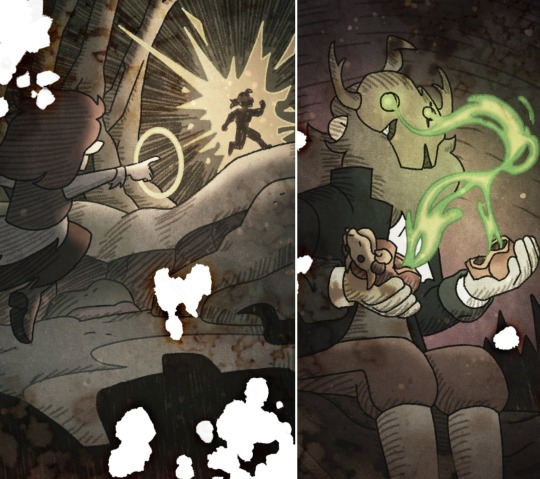
ALSO, IF YOU HAVE THOUGHTS ON THE MASK'S SYMBOLISM. PLEASE SHARE.
Idk if it's because I'm not American that I scratch my head at it, but I've searched high and low and can't find anything it might refer to, other than the typical skin**lker iconography of a monster looking deer.
There wasn't really stuff like this (that I could find) in any pequot tribes either that might've inspired Caleb's first mask for Philip.
In their playtime as children in the memories, Caleb was the witch, and Pip wore the mask as a hunter. But I can't for the life of me figure out why.
I've also been rewatcing the movie THE VVITCH that came out in 2015. Since it's a folk horror movie taking place in a Puritan new england setting, the brother that dies gets lured by a witch in the forest, and his name is Caleb. It's a pretty grotesque horror, so I thought maybe Dana was inspired by it. But I can't find anything there either that might thread insight, other than maybe that she saw the movie and liked the name Caleb and that's it.
I think the mask might just be..... because the crew thought it looked cool. LoL.
I'm... trying here. 😂 and you guys are really clever. Help a guy out yeah?
Åh yes, watch me step into the Caleb hole in the Hunter road and get stuck in the Wittebane mystery. IT APPEALS TO MY FANDOM CONSPIRACY BRAIN.
Help. 🙏
287 notes
·
View notes
Text
English subtitles the original creator of this video provided for folks, I am just transcribing them here:
Thanksgiving originally celebrated the 1637 Massacre of the Pequot tribe.
English and Dutch pilgrims surrounded and shot the Pequot Natives.
Women and children who huddled inside the longhouse were burnt alive.
"The rotting flesh could be smelled a mile away"
John Winthrop, the governor of the Massachusetts Bay Colony declared "A Day of Thanksgiving" after the slaughter.
The remaining Women and children were sold into slavery while the rest were murdered.
Following a successful raid against the Pequot, the churches announced a second day of Thanksgiving to celebrate the victory over the "Indian savages,"
Next thanksgiving, when you gather with your loved ones to Thank God for all your blessings, think about the thousands of natives that were murdered on these national holidays.
Truth is
#feminist#feminism#social justice#fuck thanksgiving#tiktoks#tiktok#intersectionality#settler violence#decolonize#solidarity#indigenous history
144 notes
·
View notes
Text
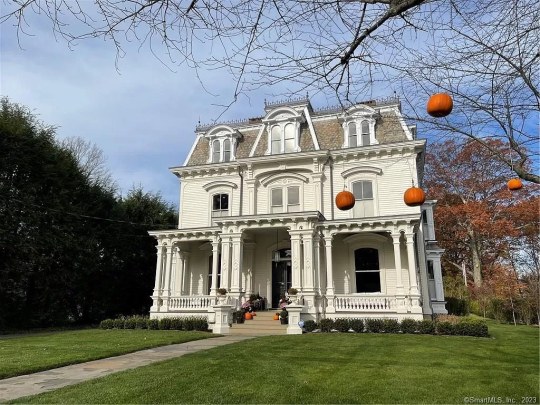
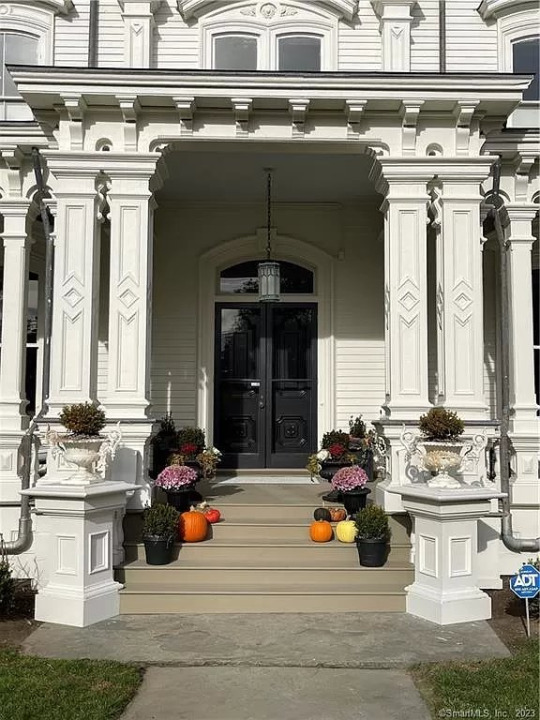
Beautiful 1868 Second Empire Victorian in Southport, Connecticut has 5bds, 5ba, $3.450M (cut by $400K). I'm thinking that the price was cut b/c the outside is so elegant and it has the wonderful mansard roof, but a buyer walks in, expecting to see a spectacular Victorian, they see a completely modernized home.
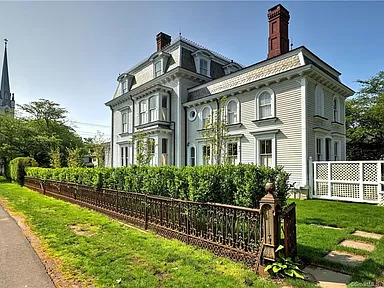
Look at how stately it is, with the original iron fence.


The entrance foyer and the stairs all painted in shades of white, gray, and black. There are still original architectural elements, but the wood is completely painted.

The sitting room is devoid of all character. The floor is a modern dark wood with gray tones.

Here's what they did to the dining room. If you embrace the painted wood and paint or wallpaper the walls, it can look more Victorian.

And, the kitchen. I wonder if a designer did this.

Well, at least the fireplace is still here.

Here is a guest powder room.

The primary bedroom.

Older homes didn't have en-suite baths, but this home has one for each bedroom.


Most of the en-suites have large walk-in showers and gray sink cabinets.

This bedroom is set up as a home office.


In the finished attic there is a game room that features a batting cage.

In the yard there's a basketball hoop.

Plus a pool with a pergola.

The lot measures .54 acre.
92 notes
·
View notes
Photo

Today is Thanksgiving in the United States, or a National Day of Mourning for Native Americans in New England, or "Unthanksgiving Day" for some Native Americans on the West Coast. It commemorates pilgrims and Wampanoag people sharing an autumn harvest feast in 1621. Thanksgiving days by English colonists in the 17th century were frequent, and marked what were perceived as gifts from God. Chris Newell, of the Akomawt Educational Initiative explained to Nur Ibrahim: "When it comes to the 17th century English 'days of thanksgiving,' they have no resemblance to the holiday we celebrate today. That holiday was not created until the 19th century. The English day of thanksgiving would have been a day of prayer. If they won a victory in battle that would have been a day of thanksgiving, which was normally a day of fasting, totally different from a feast." Some of these thanksgiving days celebrated genocidal atrocities, such as a massacre of Pequot people by colonists in Mystic, Connecticut in 1637. The modern Thanksgiving holiday as a feast began in 1863 at the behest of president Abraham Lincoln, and was made a national holiday by Congress in 1870. The Indigenous National Day of Mourning began in 1970, after Wamsutta James of the Wampanoag was invited to give a speech by the Commonwealth of Massachusetts celebrating the Pilgrims' arrival. James was uninvited when event organisers read his speech, which stated: "This action by Massasoit [Wampanoag leader who feasted with the English] was perhaps our biggest mistake. We, the Wampanoag, welcomed you, the white man, with open arms, little knowing that it was the beginning of the end." You can learn about 500 years of resistance to colonialism in the Americas in this book by Gord Hill: https://shop.workingclasshistory.com/products/500-years-of-indigenous-resistance-gord-hill https://www.facebook.com/workingclasshistory/photos/a.296224173896073/2143554975829641/?type=3
366 notes
·
View notes
Text

Patti Smith arrived in New York on July 3, 1967, via the decidedly un-scenic Port Authority Bus Terminal (625 8th Ave.), where she immediately transferred to the subway and headed for Brooklyn. She hoped to connect with a friend who was enrolled at the nearby Pratt Institute, an Engineering and Arts college in Clinton Hill. Unfortunately, it was summer break and her friend had moved to a new apartment. One of the current residents knew where her friend could be found, though, and offered to direct her there. This would be her first fleeting encounter with Robert Mapplethorpe, a young Pratt art student, and the man who would ultimately become her closest companion for the next few years. Alas, her friend was not at the said address, so Patti would sleep rough for the next several days, on porches, and in Central Park close to the statue of Alice in Wonderland.
Like many young newcomers, she would wander the streets of Greenwich Village and spend hours observing the people in Washington Square Park, an active gathering place for artists, folkies, activists, and people of every stripe imaginable. She explored St. Marks Place and the East Village, then a fairly ragged but colorful neighborhood of immigrants, hippies, artists, and the poor, always dragging her plaid suitcase along with her. One day she and a street friend found a little money and treated themselves to a hot meal at the Waverly Diner (385 6th Ave.), but otherwise she ate day-old bread and handouts. The rest of the time she was desperately looking for work, and after a disastrous single shift waiting tables at a Times Square restaurant, she found work at the midtown flagship location of Brentano’s (586 5th Ave.), a venerable bookstore near Rockefeller Center. She still had no place to stay, though, and often surreptitiously slept in the store overnight, only to emerge from the bathroom in the morning as the others readied the store. One day she ran into Mapplethorpe again in the bookstore. He, coincidentally, worked at the downtown branch of Brentano’s (20 University Pl.) in the Village. Not long afterwards, in the midst of an uncomfortable date with an older bookstore patron, Patti spotted Mapplethorpe in Tompkins Square Park, where he happily rescued her by posing as her boyfriend. The two shared an egg cream at Gem Spa (131 2nd Ave.) while commiserating. The pair would become inseparable. He brought her to stay at his place, an attic room in the home of some friends on Waverly Avenue in Brooklyn. After several weeks, the two had enough money saved for their own place nearby at 160 Hall St. on the second floor for $80 per month. This would become their headquarters for well over a year.
By winter, both Patti and Robert had lost their jobs at Brentano’s but found seasonal employment at FAO Schwarz (745 5th Ave.), the gigantic toy shop. Robert decorated windows, but Patti was stuck at the cash register. Afterward, she worked briefly at Argosy Books (116 E. 59th St.) before settling at Scribner’s Book Store (597 5th Ave.). Scribner’s would be her steady job for the next couple of years. Robert, meanwhile, went through a succession of jobs, one of which was as an usher at the Fillmore East (105 2nd Ave.), where he was able to get Patti in to see the Doors. Jim Morrison was to have a lasting influence on her...
-- Excerpt from the Rock and Roll Explorer Guide to New York City (Globe Pequot Press, June 2018) by Mike Katz and Crispin Kott, with a foreword by Legs McNeil. Also available by the same authors: Rock and Roll Explorer Guide to San Francisco and the Bay Area (Globe Pequot Press, May 2021), with a foreword by Joel Gion of the Brian Jonestown Massacre. Get ‘em both wherever books are sold at maximum volume.
Patti Smith & Robert Mapplethorpe by Norman Seeff,
77 notes
·
View notes